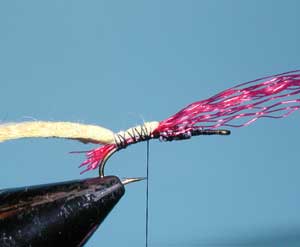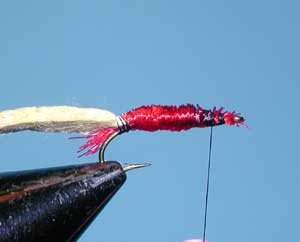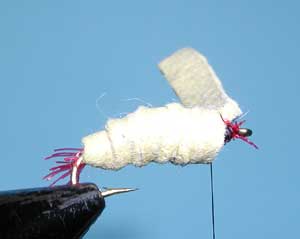Chamois Nymph – a genuine old sierra regular
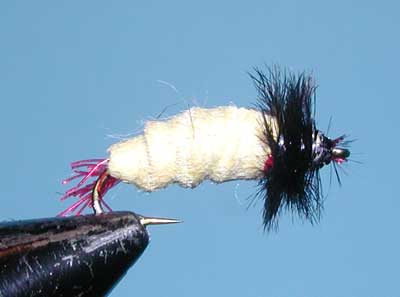
Chamois Nymph
Tying Instructions
| Materials
to Order Material, click the link |
|
|---|---|
| Hook | TMC 200R #14-20 |
| Thread | Danville Black 6/0 |
| Weight | 0.015 Leadfree wire |
| Underbody | Red Krystalflash |
| Body | Cohen's Fly Suede |
| Thorax | Black Ostrich Herl |
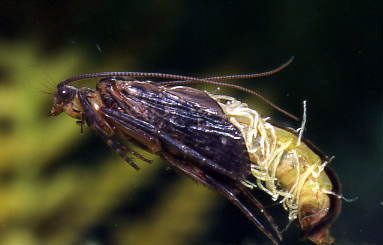

George Bodmer
Chamois Nymph
The Chamois Nymph is a variation from an earlier pattern, the Buckskin Nymph, generally attributed to George Bodmer of Colorado Springs, CO in the early 1960’s . George sent the fly to Terry Hellekson in the early 70’s which he published in his book,Popular Patterns (1977). It had a body of natural chamois wrapped over an underbody of tan floss. The chamois was twisted to give a segmented appearance. It had a tail of brown hen hackle barbs and no hackle behind the eye.
A Colorado Springs connection
There are additional references to another Colorado Springs angler, Ed Marsh, who is said to have originated the Buckskin Nymph pattern in 1972 and fished the pattern on the South Platte river in Colorado. His pattern was constructed of a thinly tapered piece of buckskin that was wrapped with the rough side out. It had a small tail of Brown Hen Hackle barbs and a swept back beard using the Brown Hen Hackle. Whether it was George Bodmer or Ed Marsh, the commonality is that the pattern was fished on the South Platte with great success and the pattern’s success moved to other regions of the west.
There have been some references that Bob Brooks, riverkeeper at Hot Creek in the 1980’s may have introduced this fly to the Eastern Sierra area. Mark Heskett referred to the pattern as the Chamois Nymph in his book,Fly Fishing Mammoth (1994) and indicated that an “old sierra regular swears by it” on the Owens river. It remains a popular caddis pattern representing the Rhyacophila genus in it’s nymphal form. An underbody is sometimes used, since the chamois can become translucent when wet. Underbodies of red or green synthetic flash are popular. A product from Hareline, known as Cohen’s Fly Suede, has become a popular replacement for chamois since it is much thinner and softer. The pattern has received renewed interest as a popular nymph for Euro nymphing with a tungsten bead head.



